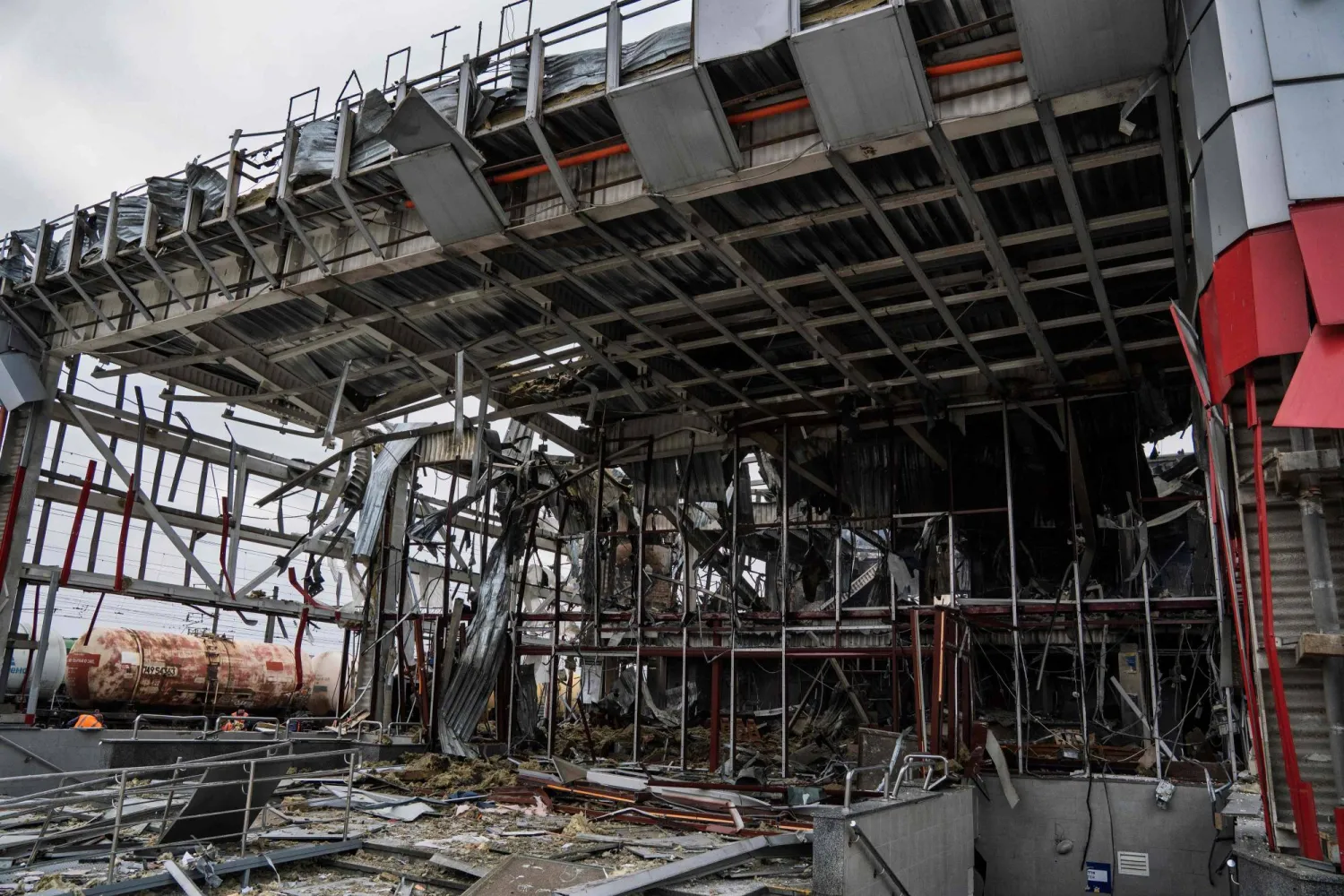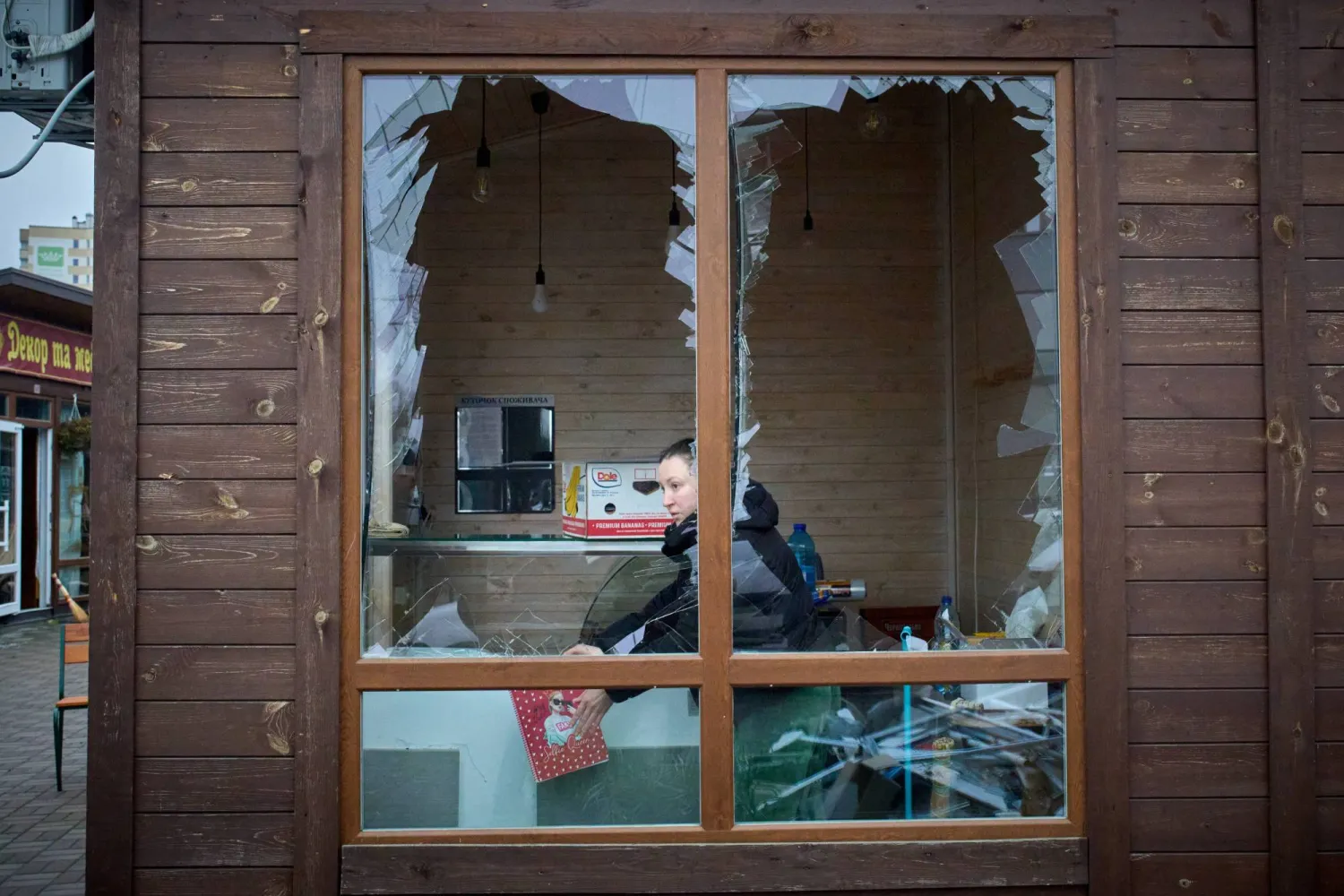NATO and Ukraine will hold emergency talks Tuesday after Russia attacked a central city with an experimental, hypersonic ballistic missile that escalated the nearly 33-month-old war.
The conflict is “entering a decisive phase,” Poland's Prime Minister Donald Tusk said Friday, and “taking on very dramatic dimensions.”
Ukraine’s parliament canceled a session as security was tightened following Thursday's Russian strike on a military facility in the city of Dnipro.
In a stark warning to the West, President Vladimir Putin said in a nationally televised speech to his nation that the attack with the intermediate-range Oreshnik missile was retaliation for Kyiv’s use of US and British longer-range missiles capable of striking deeper into Russian territory.
Putin said Western air defense systems would be powerless to stop the new missile.
Kremlin spokesman Dmitry Peskov kept up Russia's bellicose tone on Friday, blaming “the reckless decisions and actions of Western countries” in supplying weapons to Ukraine to strike Russia.
"The Russian side has clearly demonstrated its capabilities, and the contours of further retaliatory actions in the event that our concerns were not taken into account have also been quite clearly outlined," he said.
Hungarian Prime Minister Viktor Orban, widely seen as having the warmest relations with the Kremlin in the European Union, echoed Moscow's talking points, suggesting the use of US-supplied weapons in Ukraine likely requires direct American involvement.
“These are rockets that are fired and then guided to a target via an electronic system, which requires the world’s most advanced technology and satellite communications capability,” Orban said on state radio. “There is a strong assumption ... that these missiles cannot be guided without the assistance of American personnel.”
Orban cautioned against underestimating Russia’s responses, emphasizing that the country’s recent modifications to its nuclear deployment doctrine should not be dismissed as a “bluff.” “It’s not a trick... there will be consequences,” he said.
Separately in Kyiv, Czech Foreign Minister Jan Lipavský called Thursday's missile strike an “escalatory step and an attempt of the Russian dictator to scare the population of Ukraine and to scare the population of Europe.”
At a news conference with Ukrainian Foreign Minister Andrii Sybiha, Lipavský also expressed his full support for delivering the necessary additional air defense systems to protect Ukrainian civilians from the “heinous attacks.”
He underlined that the Czech Republic will impose no limits on the use of its weapons and equipment given to Ukraine.
Three lawmakers from Ukraine's parliament, the Verkhovna Rada, confirmed that Friday's previously scheduled session was called off due to the ongoing threat of Russian missiles targeting government buildings in central Kyiv.
In addition, there also was a recommendation to limit the work of all commercial offices and nongovernmental organizations "in that perimeter, and local residents were warned of the increased threat,” said lawmaker Mykyta Poturaiev, who added this is not the first time such a threat has been received.
President Volodymyr Zelenskyy’s office continued to work in compliance with standard security measures, a spokesperson said.
Ukraine’s Main Intelligence Directorate said the Oreshnik missile, whose name in Russian means “hazelnut tree,” was fired from the Kapustin Yar 4th Missile Test Range in Russia’s Astrakhan region, and flew 15 minutes before striking Dnipro. The missile had six nonnuclear warheads each carrying six submunitions and reached a spoeed of Mach 11, it said.
Test launches of a similar missile were conducted in October 2023 and June 2024, the directorate said. The Pentagon confirmed the missile was a new, experimental type of intermediate-range missile based on its RS-26 Rubezh intercontinental ballistic missile.
Thursday's attack struck the Pivdenmash plant that built ICBMs when Ukraine was part of the Soviet Union. The military facility is located about 4 miles (6 1/2 kilometers) southwest of the center of Dnipro, a city of about 1 million that is Ukraine’s fourth-largest and a key hub for military supplies and humanitarian aid, and is home to one of the country’s largest hospitals for treating wounded soldiers from the front before their transfer to Kyiv or abroad.
The stricken area was cordoned off and out of public view. With no fatalities reported from the attack, Dnipro residents resorted to dark humor on social media, mostly focused on the missile’s name, Oreshnik.
Elsewhere in Ukraine, Russia struck a residential district of Sumy overnight with Iranian-designed Shahed drones, killing two people and injuring 13, the regional administration said..
Ukraine’s Suspilne media, quoting Sumy regional head Volodymyr Artiukh, said the drones were stuffed with shrapnel elements. “These weapons are used to destroy people, not to destroy objects,” said Artiukh, according to Suspilne.









